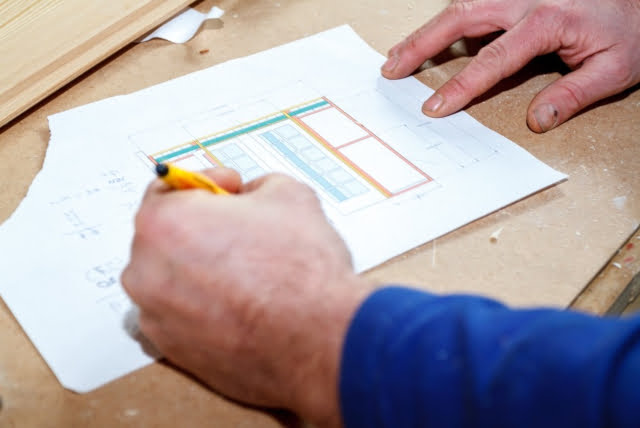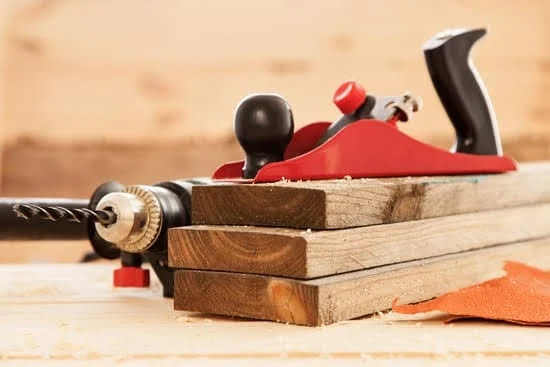Woodworking schematics are essential tools for any woodworker, serving as a guide to bring design ideas to life. In this article, we will explore the key aspects of drawing woodworking schematics and how to improve your skills in this crucial process. The accuracy and precision of schematic drawings play a significant role in executing woodworking projects successfully.
From understanding the fundamentals of woodworking schematics to utilizing specialized tools and digital software, we will cover everything you need to know to enhance your abilities in creating detailed and informative woodworking schematics. Whether you are a beginner or an experienced woodworker, mastering the art of drawing woodworking schematics can greatly contribute to your project’s success.
Join us on this journey as we delve into the world of woodworking schematics and discover how you can become better at drawing them.
The Fundamentals of Woodworking Schematics
Woodworking schematics are crucial in the crafting process as they serve as a blueprint for creating wooden pieces. These detailed drawings provide important information such as measurements, materials, and joinery techniques, ultimately guiding woodworkers in their projects. Understanding the fundamentals of woodworking schematics is essential for anyone looking to improve their woodworking skills.
Woodworking schematics are visual representations of design plans for wooden objects or structures. They depict how various parts fit together and indicate the necessary measurements and materials needed for construction. Key elements commonly included in woodworking schematics are accurate measurements, clear labeling of parts, joinery techniques, and material specifications. Precise and accurate schematic drawings are crucial because even a small measurement error or misinterpretation can significantly impact the quality and functionality of the final piece.
To develop drawing skills specifically for woodworking schematics, there are several tips and techniques that aspiring woodworkers can employ. First and foremost, practicing basic drawing exercises can greatly enhance hand-eye coordination and line precision. Drawing simple shapes and objects repeatedly helps train the muscles involved in creating smooth lines and curves. Additionally, using specialized tools such as T-squares, French curves, or drafting templates can streamline the drawing process by providing precise angles and curves.
Understanding woodworking measurement systems is also essential when working with woodworking schematics. Woodworking commonly uses both imperial (inches) and metric (millimeters) measurements depending on geographical location or personal preference. It is important to ensure that measurements are accurately scaled on drawings to ensure precise construction. Common pitfalls to avoid when dealing with measurements include rounding errors, incorrect unit conversions, or mixing different measurement systems within a single project.
Incorporating detail and clarity into woodworking schematics is vital to effectively communicate design intent. Labeling parts clearly, annotating dimensions accurately, and including relevant notes about specific details help prevent confusion during construction. Techniques like shading, hatching, or cross-hatching can be used to enhance drawings by differentiating various components and providing a three-dimensional representation.
Overall, developing a solid foundation in the fundamentals of woodworking schematics is crucial for woodworkers of all skill levels. By understanding the purpose of woodworking schematics, practicing drawing skills, mastering measurement and scaling techniques, and incorporating necessary detail and clarity, woodworkers can effectively communicate their design ideas and bring their projects to life.
Developing Drawing Skills for Woodworking Schematics
Drawing woodworking schematics requires a combination of technical knowledge, artistic skill, and attention to detail. Whether you are a beginner or an experienced woodworker looking to improve your schematic drawing abilities, there are several tips and techniques you can use to develop your skills.
- Practice Basic Drawing Exercises: To enhance hand-eye coordination and line precision, it is essential to practice basic drawing exercises regularly. These exercises can include drawing straight lines, curves, circles, and angles. Start by using simple shapes and gradually progress to more complex forms. By consistently practicing these exercises, you will develop a better understanding of spatial relationships and improve your overall drawing skills.
- Utilize Specialized Tools: In addition to practicing basic drawing exercises, utilizing specialized tools can significantly streamline the drawing process for woodworking schematics. T-squares, French curves, compasses, and rulers are just a few examples of tools that can help you achieve accurate measurements and precise lines. These tools provide stability and guidance while ensuring that your drawings are precise and proportional.
- Incorporate References: When drawing woodworking schematics, referencing existing designs or photographs can be immensely helpful in understanding various joinery techniques or specific details. Visual references can serve as a guide for proportions, scale, and overall composition in your schematic drawings. By incorporating references into your process, you can enhance the accuracy and realism of your woodworking schematics.
There is always room for improvement when it comes to drawing woodworking schematics. By practicing basic exercises regularly, utilizing specialized tools effectively, and incorporating references into your process, you can enhance your drawing skills specifically tailored for woodworking projects. Remember that proficiency in drawing detailed schematics will not only help materialize your creative vision but also ensure accurate execution during the crafting process.
Understanding Woodworking Measurement and Scaling
The Different Measurement Systems Used in Woodworking
Woodworking involves using measurement systems to accurately determine the size and dimensions of various components. It is important for woodworkers to understand the different measurement systems commonly used in woodworking, namely imperial and metric.
The imperial measurement system, also known as the US customary system, is based on inches, feet, and yards. Many woodworking projects in North America still use this system, particularly when working with older plans or following traditional techniques. On the other hand, the metric measurement system uses millimeters, centimeters, and meters. It is the standard system used in much of the world and is increasingly being adopted by woodworkers worldwide.
Accurately Scaling Measurements in Woodworking Schematics
Once you have chosen a measurement system for your woodworking project, it is crucial to accurately scale measurements in your schematics. Scaling refers to proportionally resizing measurements to fit on paper while maintaining their relative proportions.
To scale measurements effectively, it is essential to establish a consistent scale ratio throughout your schematic drawing. For example, if you decide that 1 inch in your drawing represents 1 foot in real life, ensure that all measurements are scaled accordingly. Additionally, pay attention to scaling accuracy by using precise measuring tools such as a ruler or calipers.
Common Pitfalls and Mistakes with Measurements in Woodworking Schematics
Misinterpreting or incorrectly scaling measurements can lead to costly mistakes when it comes time to build your woodworking project. Some common pitfalls to avoid include:
- Improper conversion between imperial and metric systems: If you are referencing plans or instructions from different sources that use different measurement systems, be careful not to mix up conversions or overlook them altogether.
- Inconsistent scaling: Always double-check that all measurements within your schematic drawing are properly scaled according to the established ratio.
- 3.Relying solely on measurements: While precise measurements are important, it is also essential to consider other factors such as joinery techniques, materials, and clearance requirements when creating woodworking schematics. Neglecting these aspects can lead to issues during the building process.
By understanding the different measurement systems used in woodworking, accurately scaling measurements in schematics, and avoiding common pitfalls, you can ensure precision and accuracy in your woodworking projects.
Incorporating Detail and Clarity into Woodworking Schematics
Woodworking schematics serve as a visual roadmap for woodworkers, providing them with crucial information about measurements, materials, and joinery techniques. However, creating accurate and detailed woodworking schematics requires more than just technical skills. In this section, we will explore strategies for incorporating detail and clarity into woodworking schematics to ensure clear communication and successful execution of projects.
One important aspect of creating detailed woodworking schematics is labeling parts and annotating dimensions. By clearly labeling each component of the project and adding dimensions to key elements, woodworkers can avoid confusion and prevent costly mistakes during the construction process. Additionally, including relevant notes or instructions can provide further clarity on specific aspects of the project.
Another technique to enhance the clarity of woodworking schematics is the use of various drawing techniques such as shading, hatching, and cross-hatching. These techniques can help differentiate different components or materials in the schematic, making it easier for woodworkers to understand the construction process at a glance.
| Component | Description | Dimensions (inches) |
|---|---|---|
| Leg | Annotated with “L” | 2″ x 2″ x 30″ |
| Apron | Annotated with “A” | 3/4″ x 6″ x 18″ |
In this example, using clear labels (“L” for leg and “A” for apron), along with accurately annotated dimensions (2″ x2″ x30″ for the leg and 3/4″ x6″ x18″ for the apron), allows woodworkers to identify each component and their respective measurements easily. This level of detail and clarity helps prevent mistakes during construction, leading to a more successful woodworking project.
By incorporating these strategies for detailing and enhancing clarity in woodworking schematics, woodworkers can effectively communicate their design intent and ensure precise execution of their projects. The ability to create detailed and clear schematics is a valuable skill that every woodworker should strive to develop.
Utilizing Digital Tools for Drawing Woodworking Schematics
With advancements in technology, digital tools and software have become an invaluable resource for woodworkers seeking to improve their drawing skills. Utilizing digital tools for drawing woodworking schematics offers several advantages that can streamline the process and produce professional-looking results.
One of the primary advantages of using digital tools for drawing woodworking schematics is the ability to easily make revisions and edits. Unlike traditional pencil and paper drawings, digital drawings can be modified with just a few clicks, allowing woodworkers to experiment with different design choices or accommodate changes in measurements or materials without having to start from scratch. This flexibility saves time and reduces frustration, particularly when working on complex projects that require multiple revisions.
Additionally, digital tools offer a range of features and functions that can enhance the accuracy and precision of woodworking schematics. Many software programs provide measurement tools that automatically calculate dimensions based on scale, eliminating the need for manual measurements and reducing the potential for human error. Some programs also include libraries of standard woodworking symbols, icons, and templates that can be easily inserted into drawings, further improving efficiency.
To effectively utilize digital tools for drawing woodworking schematics, it is important to choose the right software or app that caters specifically to woodworking needs. Options such as SketchUp, AutoCAD, or Fusion 360 are popular choices among woodworkers due to their user-friendly interfaces and extensive capabilities. Woodworkers should familiarize themselves with the functionalities of their chosen tool through tutorials or online resources in order to maximize its potential.
Learning from Expert Woodworkers and Resources
Woodworking is a craft that has been passed down through generations, and there is much to learn from those who have mastered it. One valuable way to improve your woodworking schematic skills is by learning from experienced woodworkers. These experts have spent years honing their craft and have invaluable insights and techniques to share.
There are several ways to learn from expert woodworkers. One option is to seek out books written by renowned woodworkers who specialize in drawing woodworking schematics. These books often provide detailed instructions, tips, and tricks for creating accurate and professional drawings. Some popular recommendations include “The Anarchist’s Design Book” by Christopher Schwarz, “Understanding Wood: A Craftsman’s Guide to Wood Technology” by R. Bruce Hoadley, and “Illustrated Cabinetmaking: How to Design and Construct Furniture That Works” by Bill Hylton.
Another excellent resource for learning from expert woodworkers is online tutorials and forums dedicated to the craft of woodworking. Many well-known woodworkers share their knowledge through video tutorials, blog posts, or participation in online communities. Participating in these communities not only allows you to learn from the experts but also provides an opportunity to connect with like-minded individuals who share your passion for woodworking.
In addition to learning from expert woodworkers directly, studying exceptional woodworking schematics can provide inspiration and insight into what makes a drawing effective. Analyzing the layout, level of detail, labeling techniques, and overall clarity of well-executed schematics can help you understand how to improve your own drawings. There are websites and social media platforms where woodworkers showcase their work; exploring these platforms can expose you to a wide range of styles and approaches.
By seeking out resources created by expert woodworkers and studying exceptional examples of woodworking schematics, you can gain valuable knowledge that will enhance your own drawing skills. Remember that learning is an ongoing process, so continue seeking opportunities to expand your understanding and improve your craft.
Practicing and Applying Woodworking Schematics
Importance of Practice
To truly excel at drawing woodworking schematics, practice is essential. Just like any other skill, the more you practice, the better you become. By regularly engaging in drawing exercises and projects that involve creating woodworking schematics, you can refine your skills and improve your accuracy and precision.
Practical Exercises and Projects
One way to practice drawing woodworking schematics is by starting with simple exercises. For example, try sketching basic geometric shapes such as squares, rectangles, circles, and triangles. This will help enhance your hand-eye coordination and improve your ability to draw straight lines and angles accurately.
Once you feel comfortable with the basics, challenge yourself with more complex projects. Take on small woodworking tasks and create detailed schematics for each step of the process. By doing this, you not only improve your drawing skills but also gain a deeper understanding of the craftsmanship involved in woodworking.
Seeking Feedback and Critique
To continuously improve your woodworking schematic abilities, it’s important to actively seek feedback and critique from others. Share your drawings with experienced woodworkers or join online forums where you can receive constructive criticism from a community of fellow enthusiasts.
Don’t be afraid to embrace feedback as an opportunity for growth. Take note of areas that need improvement and apply suggestions provided by others to refine your skills further. Learning from the expertise of others can accelerate your progress in becoming proficient at drawing woodworking schematics.
Remember, becoming a master at drawing woodworking schematics takes time and dedication. With consistent practice, a willingness to learn from others, and an eagerness to refine your skills through constructive critique, you can enhance your abilities in creating accurate and detailed schematics for all your woodworking projects.
Conclusion
In conclusion, mastering the skill of drawing woodworking schematics is essential for any woodworker looking to excel in their craft. Throughout this article, we have emphasized the importance of accurate schematics, discussed fundamental elements and techniques, explored measurement and scaling methods, and highlighted the benefits of incorporating detail and clarity into drawings. We have also addressed the integration of digital tools into the drawing process and emphasized the value of learning from experts and available resources.
To become a master at drawing woodworking schematics, it is crucial to practice regularly and continuously seek improvement. Embracing basic drawing exercises to enhance hand-eye coordination and line precision can greatly contribute to honing your skills. Additionally, utilizing specialized tools such as T-squares and French curves can streamline the drawing process and improve accuracy.
It is also important to understand different measurement systems used in woodworking, scaling measurements accurately in schematics, and avoiding common pitfalls associated with measurements. Adding necessary detail, labeling parts correctly, annotating dimensions, including relevant notes, shading different components effectively are all crucial elements that can enhance the quality of your schematic drawings.
Embracing digital tools for drawing woodworking schematics offers numerous advantages such as ease of use, enhanced organization capabilities, and the ability to create professional-looking schematics. Taking advantage of reputable books, online tutorials, forums dedicated to improving woodworking schematic skills proves invaluable when seeking to learn from experienced woodworkers.
Ultimately, becoming proficient at drawing woodworking schematics requires dedication, practice, continuous learning from experts and available resources. With time and effort invested in this skillset along with embracing challenges that arise throughout the journey of improvement; anyone can become a master at drawing woodworking schematics. So embrace this journey as you continue honing your craft as a woodworker.
Frequently Asked Questions
How can I get better at woodworking?
To improve your woodworking skills, there are several steps you can take. First and foremost, practice is key. The more you work with wood, the better you will become at understanding its properties and how to manipulate it effectively.
It’s also helpful to seek out learning opportunities such as taking woodworking classes or workshops where you can learn from experienced woodworkers. Additionally, investing in quality tools and equipment that are suitable for your projects will greatly contribute to your improvement. Lastly, don’t be afraid to experiment and try new techniques – this will expand your skill set and help you grow as a woodworker.
What software do you use to make woodworking plans?
When it comes to creating woodworking plans, there are a variety of software options available depending on individual preferences and requirements. Some popular choices include SketchUp, AutoCAD, and SolidWorks. These software programs allow woodworkers to create detailed 3D models of their projects, aiding in visualizing the final result before even starting the construction process.
They offer features like precise measurements, accurate dimensions, material estimation, and the ability to make adjustments easily. Ultimately, the choice of software depends on personal preference and familiarity with the program.
Why do woodworkers usually make their working drawing to scale?
Woodworkers commonly create their working drawings to scale for several reasons. One primary reason is that scaling allows for more accurate planning and execution of a project. By representing the actual size of components relative to each other on paper or using computer software beforehand, woodworkers can anticipate any potential issues or discrepancies in their designs before beginning construction.
Scaling also facilitates effective communication between different parties involved in a project; if measurements are clearly presented at scale, it becomes easier for clients or other collaborators to understand the intended outcome accurately. Furthermore, scaled drawings help ensure consistency throughout various stages of a woodworking project by serving as reference points during construction and assembly processes.

Hi everyone! I’m a woodworker and blogger, and this is my woodworking blog. In my blog, I share tips and tricks for woodworkers of all skill levels, as well as project ideas that you can try yourself.





